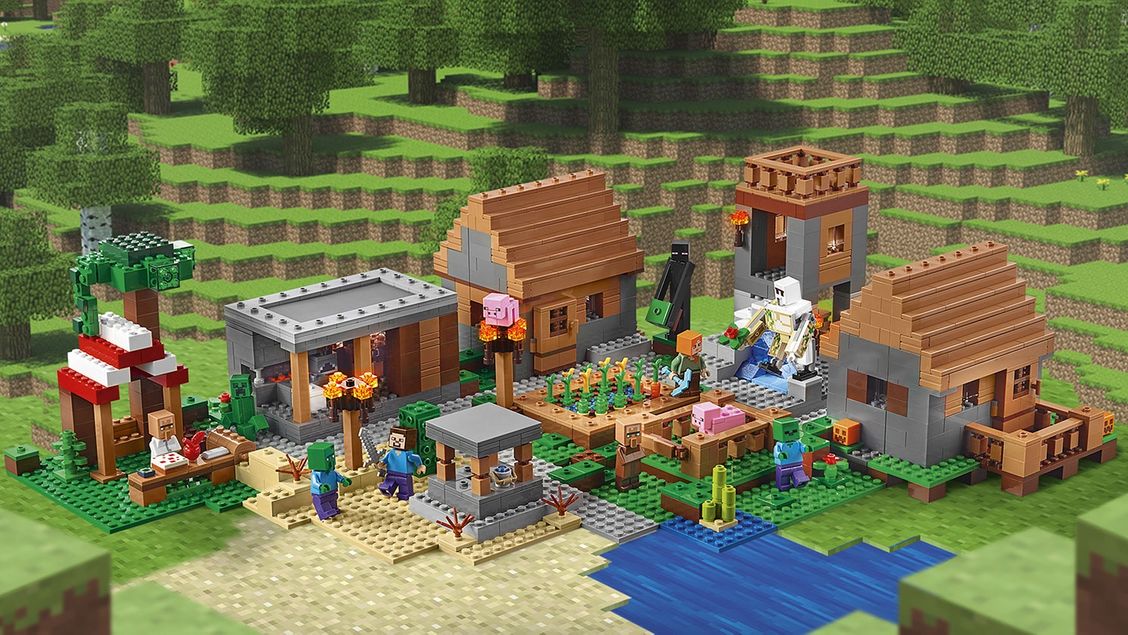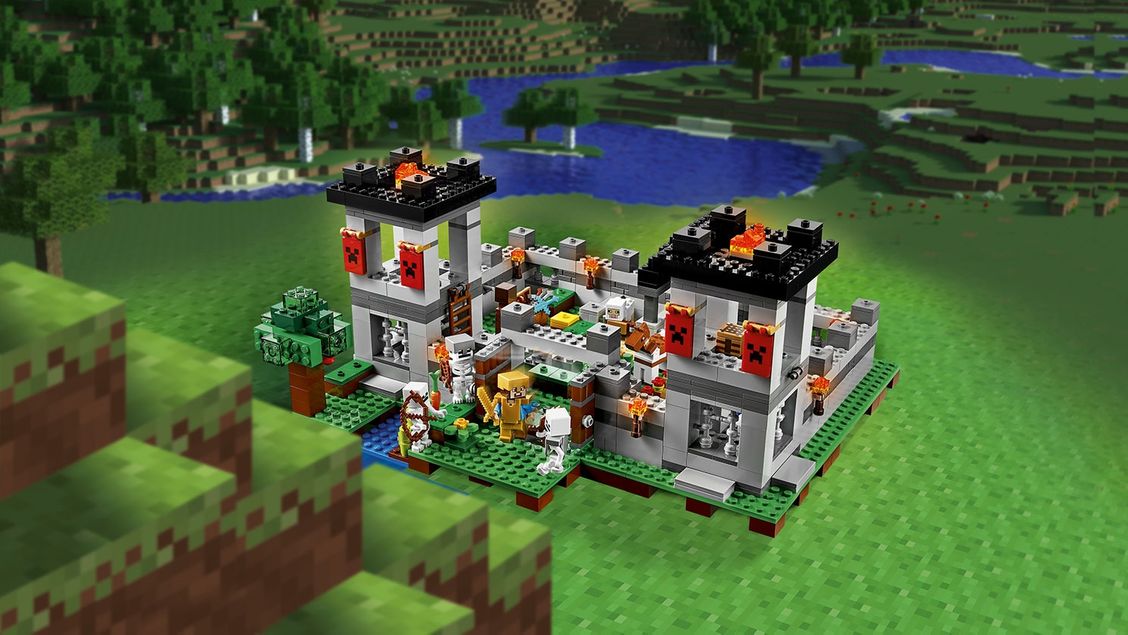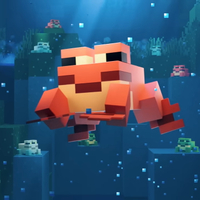A Lego Minecraft game called 'Brickcraft' was prototyped and greenlit – here's why it never happened
Notch doesn't seem to get on with lawyers.

As Minecraft neared its full release in 2011, it was already clear that things were going well. Developer Markus 'Notch' Persson had many inspirations for the game, but a comparison people naturally draw is to Lego: not necessarily in all the game's elements, but in its freeform structure and the simple pleasure of building something.
Lego itself has been involved in several projects that seem to have subsequently taken some inspiration from Minecraft, but back in 2011 it was focused on its own Lego Universe. At the same time Notch and Mojang's Daniel Kaplan were trying to get in touch with the Lego Group: they had an idea.
As part of Lego's 25th anniversary in video games, the company has produced a podcast series called Bits 'n Bricks, and the first full episode was released today, focusing on the Lego-Minecraft collaboration that never got off the ground.
The co-presenter of the podcast, longtime games journalist Brian Crecente, summarises what the concept behind the game would be. "This idea of Brickcraft, the early concept was essentially to take the Minecraft design and gameplay loop, and then add the Lego brick aesthetic to it. And one of the key shifts was moving away from that one-by-one bit design. So where Minecraft, if you were to convert that completely over to Lego bricks, Minecraft would be just those one-by-one bricks, and what the Lego Group and what Mojang wanted was something that included all of this sort of eclectic, diverse mix of Lego bricks that you could build with, which makes the game obviously a lot more complex, but it provides you with more resources and variety of shapes—essentially all of the stuff found in Lego bricks."
Notch started work based on this idea. "That was the prototype," says Daniel Kaplan. "Like just start with very, very few pieces and see if it works because we knew that Lego bricks were way more complex in terms of placement of the units of bricks. And that was something we found that was very elegant with Minecraft was that it was only like one-by-one bricks, in comparison to the Lego Group's quite complex and vast library of bricks. And Markus actually built the first prototype completely by himself with various Lego bricks as a template for the game. And he managed to create a prototype that generated terrain with the various Lego bricks and a FPS control camera where you could run around and place bricks in various places and have various options of how to place the bricks."
The project codename came from Napoleon Dynamite, where the local dojo owner Rex names his place Rex Kwon Do. In fact, Notch tweeted about working on this in 2011, and even shared a potato-quality tease.
Great progress on Project Rex Kwon Do today. This is the clearest screenshot I can show: http://t.co/08RbdkmSeptember 7, 2011
This prototype was greenlit, and Mojang hired two coders to begin working on it. Within six months, it would be over. Lego didn't pull the plug: Mojang did.
Keep up to date with the most important stories and the best deals, as picked by the PC Gamer team.
Lego has a reputation for being an especially demanding partner, hyper-protective of its family-friendly image and the nature of the blocks themselves. This means working on a Lego project comes with a huge amount of back-and-forth as assets and ideas are scrutinised by the mothership.
"So our legal team emphasized a lot of things that in the grand scheme of things wouldn't matter," says Daniel Mathiasen, a former Lego employee and currently general manager at FRVR. "Looking back and seeing the epic nature of what Minecraft has become and a driving force in kid's culture in itself, like listing out the hurdles that the LEGO Group put up for this would be ridiculous. Like strategically, they would not matter at all. And it's one of the things that I'm...when looking back at my leadership impact and could I have done anything different? Should I have pushed through? Should I have insisted more in driving it through? But it was like little details that messed it up and, in the end, understandably, Mojang [thought] we just can’t waste our time on this, the opportunity cost of sitting and discussing these things. We will never get to what is important, which is making great experiences for the kids."
Or as Mojang's Kaplan puts it, "at one point we felt more like consultants rather than the ones running the project." He goes on to give an example of the kind of disagreement that resulted in the game never happening.
"One thing we wanted to do was to add scratches to the pieces, the Lego pieces. And that was something we got a lot of pushback from the Lego Group, they were like, oh no we can't show pieces being scratched. And we were like, but all Lego pieces in every box are scratched. And they had this façade on how they want people to look at them that they were very keen on keeping. And we wanted to try to represent Lego bricks how it is actually in kids' bedrooms basically, or any rooms, but they were very much against that.
"The questions I had for them, like, okay when can we get the specifications of the Minifigs so we can implement them? And we wanted to try to make sure they were animated, like stop-motion animated, basically like the Lego movies, you know, the stop motion animate. Then you can, in your mind, see that someone was basically holding the Minifigs with their fingers and jumping around with it. And we wanted to simulate that in the game as well."
As Daniel Mathiasen recalls, eventually all the legal nonsense just became too much. "The way that a big company like [Lego] works is that when the lawyers are in the driving seat, then it's really like you have to push really, really hard to overcome that. So it just became extremely tiresome for them to sit in it."
"I don't remember all the details," says Kaplan, "but it was in our office. And I think, Notch just said we'll end this project now. At the end of the day I think Markus just gets fed up with all the various rules that did not sync with his view and our view of how we want to make games. It was just a very different ways of looking at things."

The coda to this story is that, following the project's collapse, Lego briefly considered acquiring Mojang Studios. Microsoft's interest and the eventual $2.5 billion price tag put the company off. Amusingly enough, Lego now makes Lego Minecraft sets (which is where the images in this article come from).
Ronny Scherer, senior director at Lego Games, Asia Pacific, explains some of why the company decided against an acquisition. "Minecraft was still not the success that it became, so it was still emerging. And so there was, of course, no guarantee that it would end up becoming the cultural phenomenon that it became. I didn't and others didn't do a good enough job of conveying the potential significance and opportunity that would come along with an acquisition like that. We're not a company that is, that has a big history of acquisitions, especially not successful ones [...] and this would have been by far the largest transaction that we would get involved in."
There's more detail and texture about the ill-fated project in the full podcast episode, which is well worth a listen.
Though Brickcraft wouldn't get off the ground, the ideas Mojang had for its future align somewhat with the direction Minecraft has taken with adventure mode. Different biomes would be themed around Lego's bread-and-butter (cities, jungles, pirate ships) and players would go through in a story mode, or just freeplay and create. It's a pity Brickcraft never happened. But sheesh: no wonder.
Minecraft seeds: Fresh new worlds
Minecraft texture packs: Pixelated
Minecraft skins: New looks
Minecraft mods: Beyond vanilla

Rich is a games journalist with 15 years' experience, beginning his career on Edge magazine before working for a wide range of outlets, including Ars Technica, Eurogamer, GamesRadar+, Gamespot, the Guardian, IGN, the New Statesman, Polygon, and Vice. He was the editor of Kotaku UK, the UK arm of Kotaku, for three years before joining PC Gamer. He is the author of a Brief History of Video Games, a full history of the medium, which the Midwest Book Review described as "[a] must-read for serious minded game historians and curious video game connoisseurs alike."


